A third of the world’s soil is moderately to highly degraded, threatening global food supplies, increasing carbon emissions and foreshadowing mass migration. A change in farming practices has never been more urgent.
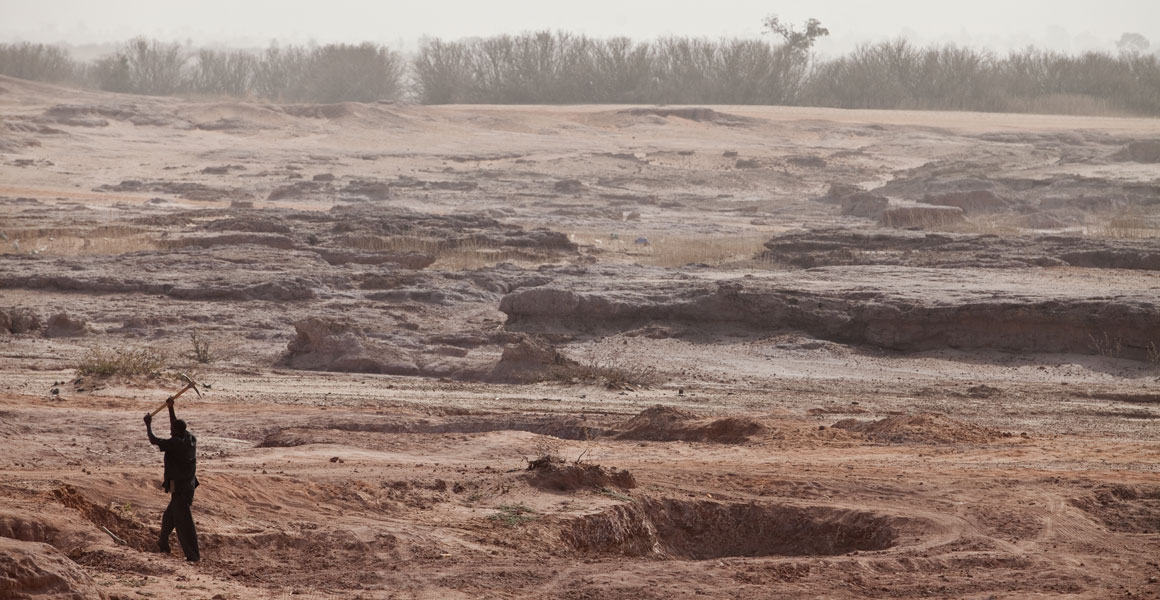
An arid environment outside Koulomboutej village, Nigeria. Poor communities will be hit the hardest by negative environmental changes like soil degradation. © Giulio Napolitano/Shutterstock.
Soil is a priceless, non-renewable resource that's home to thousands of animals, plants and other important organisms. It supports countless ecosystems and provides us with essential food and resources. The dirt beneath our feet often goes unnoticed but it is key to sustaining all life on Earth.
Silvia Pressel, a Museum researcher in the Algae, Fungi and Plants Division, says, 'Soil is full of millions of living organisms that interact with one another. These organisms have a major influence on soil, such as its formation, structure and productivity.'
What is soil degradation?
Soil degradation describes what happens when the quality of soil declines and diminishes its capacity to support animals and plants. Soil can lose certain physical, chemical or biological qualities that underpin the web of life within it.
Soil erosion is a part of soil degradation. It's when the topsoil and nutrients are lost either naturally, such as via wind erosion, or due to human actions, such as poor land management.
What does healthy soil look like?
There are many types of soil around the world. The UK alone has over 700 varieties, such as clay, sand, silt, loam and peat. These soils have different characteristics which can be useful for humans.
Healthy soil has a good combination of soil structure, chemistry, organic matter content, biology and water permeation for its type.
A typically healthy soil will be teeming with biodiversity and may include a variety of earthworms, 20-30 types of small arachnids, 50-100 species of insects, hundreds of different fungi and thousands of bacteria species.
'There are some things in soils which will be visible to the naked eye, like invertebrates and plant roots,' explains Silvia. 'But there are also millions of things people won't be able to see like micro-organisms and all the fascinating work they do together.'
Nowhere else in the world is nature so densely packed. A teaspoon of soil can contain more organisms than there are humans living on Earth.
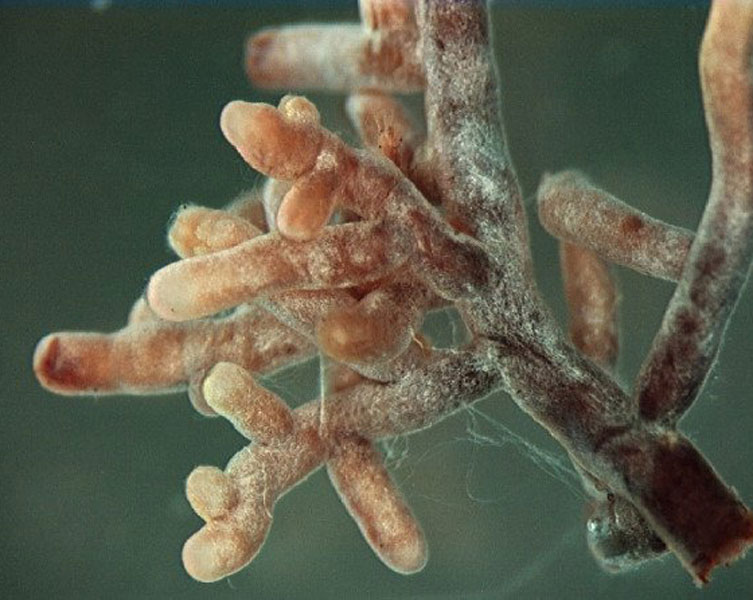
A type of mycorrhizal fungi forming a symbiotic relationship with a plant root. These fungi help plants absorb hard-to-get soil nutrients, such as phosphorus in exchange for sugar. Mycorrhizal fungi are ubiquitous on land, but are being destroyed by farming practices such as tilling and use of chemicals. Research on mycorrhizal fungi is increasingly important and could be a viable solution for sustainable agriculture. Image by Ellen Larson/wiki (CC BY 2.5).
One of the most widespread soils in Britain is brown earth, which covers about 45% of land in England and Wales.
Brown earth has a deep top layer where most of the nutrients are and biological activities take place. At around 20 centimetres deep, it provides a lot of space and encouragement for roots to grow comfortably.
Brown earth also drains water at a moderate rate, which allows plants to absorb enough water without drying out or flooding.
These qualities make brown earth well-suited for agriculture, and most British farms depend on it.
The benefits of soil
The millions of organisms that live within soil interact with one another and contribute to a number of cycles that make all life on Earth possible. These include carbon, nitrogen and phosphorus cycles.
Soil plays a vital role in cleaning water. Minerals and microbes filter and buffer potential pollutants, some of which are absorbed by soil particles. This is promoted by the thousands of organisms that live in soil, including earthworms, ants and termites, which create channels and routes for water and air to flow through.
Soil also regulates the movement of water and prevents floods by controlling whether rainfall, snowfall and irrigation water will flow over land or through it.
Healthy soil contains high biodiversity, which helps fight off pests and allows fresh, nutritious plants to grow.
Soil also contains organisms that can kill harmful bacteria. A variety of medicines have been made from organisms that live in soil, such as penicillin - a group of antibiotics widely used to fight off bacterial infections.
Soil provides physical stability for plants by allowing the roots to anchor to something. This in turn helps create oxygen and clean water for all life on Earth. Soil also provides support for manmade structures, including treasured but fragile archaeological sites.
Finally, soil plays a very important role in mitigating climate change. It is the second-largest carbon sink after the ocean, constantly storing and releasing carbon, which regulates atmospheric CO2 concentrations and, ultimately, the greenhouse effect.
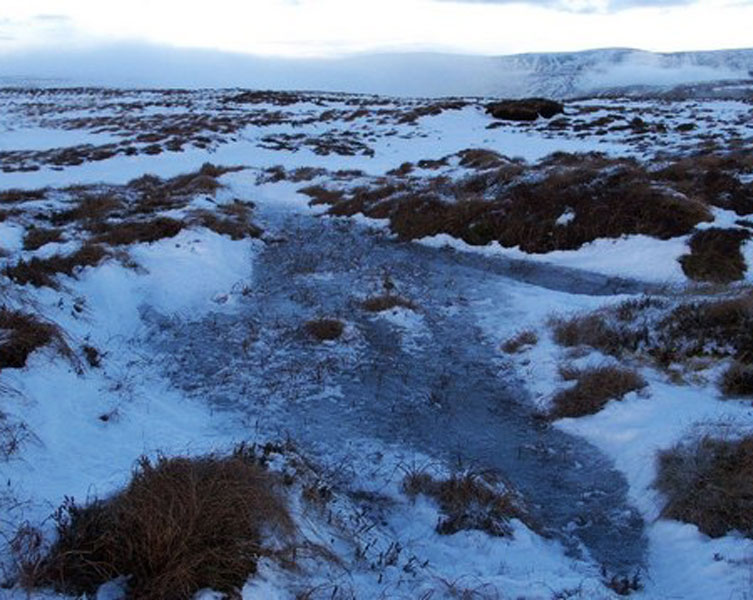
Peatland landscapes vary from frozen, open spaces in Scotland to swamp forests in Indonesia. Peatlands are the largest natural form of carbon storage on land and are vital for reducing global carbon emission. Due to lack of awareness, many peatlands have been overexploited and damaged by draining, burning and mining. Image by Ross/wiki (CC BY-SA 2.0).
The cause of soil degradation and how it affects us
Soil is not an inert medium but a living ecosystem that is essential to life. It takes hundreds and thousands of years to form an inch of topsoil, and many more centuries before it is fertile.
While soil degradation is a natural process, it can also be caused by human activity. In the last few decades, soil degradation has been sped up by intensive farming practices like deforestation, overgrazing, intensive cultivation, forest fires and construction work.
These actions disturb soil and leave it vulnerable to wind and water erosion, which damages the complex systems underneath.
Silvia says, 'Several practices associated with intensive agriculture, especially tilling, disrupt soil structure. They accelerate surface runoff and soil erosion, loss of organic matter and fertility and disruption in cycles of water, organic carbon and plant nutrients. These practices also have a major negative impact on soil biodiversity.
'When soil degrades, the processes that take place within it are damaged. This causes a decline in soil health, biodiversity and productivity, leading to issues at all levels of many ecosystems, and resulting in large environmental consequences such as floods and mass migration.'
When natural land such as a forest is converted into farmland, it removes important nutrients and prevents the recycling and replenishing of organic material.
It also reduces the amount of carbon the soil can store by 50-75%. With global warming being one of the biggest environmental crises of our time, this would be a giant step backwards.
Soil compaction occurs when there is a combination of wet soil and a heavy weight, for example unwieldy machinery in farming. Networks of tunnels and pores created by various organisms collapse beneath the pressure and air is squeezed out, threatening underground habitats and the availability of nutrients. Tilling soil also has similar results.
Salination - salty water - is a result of excessive irrigation or extraction of groundwater in coastal areas. This can make some bacterial species inactive and can kill many other microorganisms.
Without underground life, land would become barren. In a worst-case scenario, it can lead to desertification, where the soil is damaged beyond repair and nothing grows except a handful of plants that can handle very harsh conditions.
But it's not just agriculture that is to blame: increasing urbanisation also has a negative impact. The widespread use of tarmac and concrete prevents water from being absorbed into the ground. This results in the death of millions of microorganisms and can lead to water runoff in other areas where it may cause flooding and erosion.
Soil degradation can have disastrous effects around the world such as landslides and floods, an increase in pollution, desertification and a decline in global food production. One of the biggest threats to our future food security is land degradation and the associated loss in soil productivity.
Areas that are most likely to be affected are developing countries which usually provide services and materials to middle- and high-income countries. Many of the people who live in low-income countries could be forced to leave their homes in search of safety and fertile lands, resulting in the loss of cultural identity as well as possible economic and political instability in other areas.
Acknowledging soil for what it is and recognising the irreplaceable role it plays can help us change the way we care for it which is something that needs to happen now.
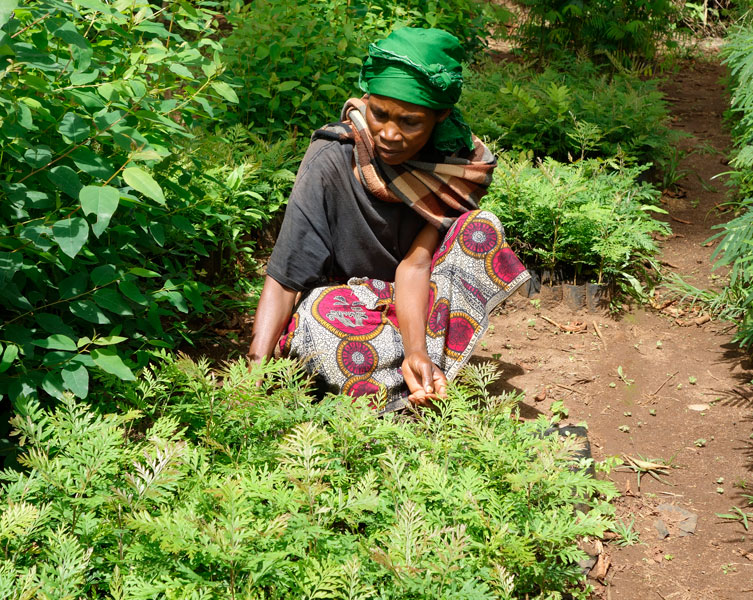
Agroforestry in Lushoto, Tanzania. Agroforestry is the practice of growing a variety of plants together, which allows different biological systems to support each other and flourish. Planting crops around trees is particularly useful as trees protect the soil from wind and water erosion and stabilise the crops. © CCAFS/Flickr (CC BY-NC-SA 2.0).
How can we mitigate soil degradation?
Many practices can be changed to prevent, and in some cases reverse, soil degradation.
These include simple acts such as leaving vegetation on soil to allow nutrients to return into the earth.
Communities, farmers and corporations can be educated about sustainable practices to promote respect and responsibility for nature and reduce their carbon footprint.
Education can also encourage individuals to grow their own produce, which can foster a curiosity and appreciation for nature, as well as motivate to protect the planet. It also alleviates some of the pressure experienced by farms to support an ever-growing population.
Other changes may be harder to establish, such as avoiding monocultures (growing one single crop in a large area), because that would require lots of farmers to overhaul the way they work.
However, monocultures can be extremely damaging to the soil - growing the one type of plant in one area of soil means the same nutrients are continuously being absorbed, which eventually leads to depletion.
Monoculture also makes soil susceptible to pests, pathogens and diseases which adapt to the unchanging environment and cause devastating destruction of crops.
Farmers often end up using chemical products to fight pests and diseases, and fertilisers to try and encourage crops to continue growing.
While this may work in the short term, it has bigger and wider consequences in the long run. Soil and food are contaminated with unnatural substances and the surrounding environment. This damages nature further and can cause sickness in both humans and animals.
Here are some solutions:
- Practicing crop rotation allows different plants to grow in an area of soil every year. This allows the soil to replenish itself of nutrients that are lacking after the growth of one type of plant.
- Agroforestry involves growing crops around trees and other plants such as hedges. Trees create their own microclimate, which is favourable for crops. They also act as a form of protection against wind and water damage and encourage biodiversity, which keeps ecosystems strong and healthy.
- Permaculture is a form of sustainable farming that respects nature and its design. It incorporates practices such as creating an integrative space where beneficial relationships between different organisms can flourish, and avoiding unnatural substances and waste.
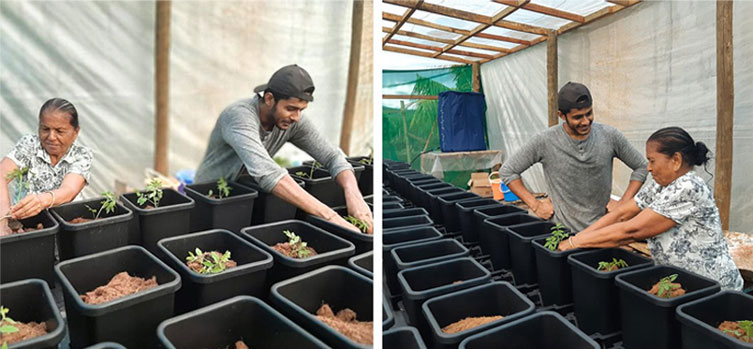
Hydroponics is good for growing some vegetable like onions, carrots, coriander and mint. Here, Rinesh Sharma plants tomatoes with his enthusiastic grandmother. © Smart Farms Fiji/Facebook.
Case study: hydroponics and aquaponics
Rinesh Sharma is a Commonwealth Youth Awards 2020 finalist based in Fiji. The young entrepreneur founded Smart Farms Fiji, an initiative that aims to provide sustainable food using hydroponics.
Hydroponics is a form of soil-less farming where seeds are grown in nutrient-rich water instead.
Rinesh says, 'Fiji has a lot of problems which make it hard to grow crops, such as salt in the soil, heavy rain and cyclones at certain times of the year, and a lack of land and space.
'With hydroponics, we grow the plants indoors and control every aspect of its environment, including sunlight, temperature, moisture and the amount of nutrients we put in.
'With soil farming, you're not always sure what the soil contains, and you have to wait to see the outcome.
'Hydroponics is a lot more certain and adjustments can be made in seconds. This results in a high yield over a shorter period with minimum waste.'
However, hydroponics is a difficult procedure as the conditions require a delicate balance between the elements and needs to be monitored closely.
Rinesh says, 'Hydroponics is feasible in Fiji because the knowledge and material are available here. It's useful for growing really good veggies like carrots, coriander and mint. But the future of farming is aquaponics.'
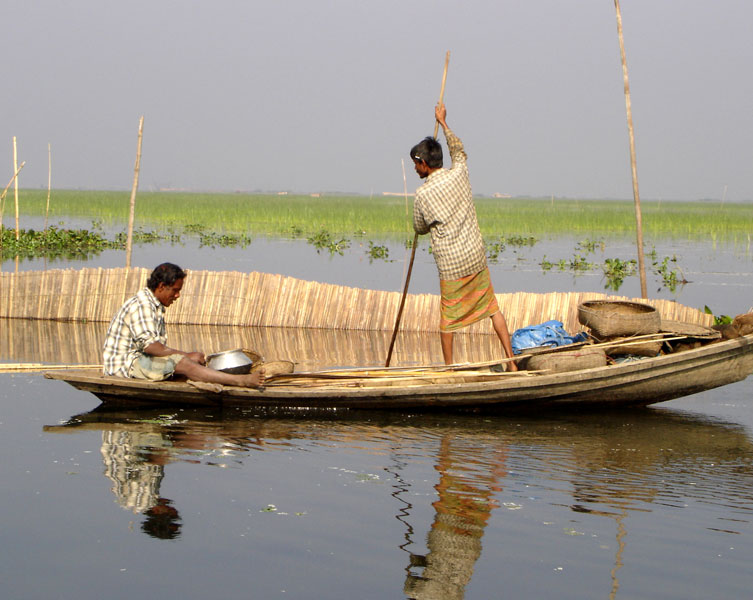
Aquaculture is booming in Bangladesh, contributing to the country's overall economic growth. Fish production has more than doubled in less than a decade. If this continues, it could push Bangladesh from being a low-income country to lower-middle-income in the near future. Worldfish/Flickr (CC BY-NC-ND 2.0)
Aquaponics is a man-made system of fish and plants. The fish eat and excrete ammonia which is converted into nutrients by bacteria, and the plants absorb the nutrients, which cleans the water. This is a natural cycle that happens all over the world.
Rinesh says, 'Hydroponics uses a lot of water, but aquaponics recycles existing water. It also produces healthier fish and proteins and doesn't have any negative impacts.'
The organic process uses a fraction of water compared to soil-based farming. It can also be created almost anywhere from a small back garden to a large, industrial farm. What's more, both fish and plants can be eaten.
Soil and science
Scientists like Silvia are trying to find new, natural ways of managing soil to improve its function.
Silvia's research explores mycorrhizal associations, or the symbiotic relationship between plant roots and soil fungi. The fungi help plants extract hard-to-get soil nutrients such as phosphorus and nitrogen in exchange for sugar. They can also bring additional benefits to their plant hosts and to the environment by increasing plant resistance to drought and pest attacks. They also improve soil structure as well as the plants' carbon storage and retention of nutrients.
'This process has been taking place for some 500 million years,' explains Silvia. 'We think the first plants to colonise land from freshwater formed this key association with fungi and this was a major event that helped plants become the huge success story that they are today.
'By learning more about this association between plants and fungi, a long-term goal of my research is to exploit this partnership in an agricultural setting and reduce the use of chemical fertilisers.'
The global population size is projected to increase from seven billion today to more than nine billion by 2050.
Crop production has risen dramatically over the past few decades due to intensive agricultural practices, but this has had a huge negative impact on the environment and cannot be sustained. In fact, agricultural productivity is now declining because of this, posing a major threat to global food security.
Altering our eating habits and moving towards a plant-based diet is something we can all do to help make a difference.
More policies that protect the environment against unsustainable practices are needed, and individuals can exercise their rights by applying pressure on the government to prioritise this.
Earth has gifted us with resources and it's time for us to give back by fighting to protect it.

Find Your Climate Action
Taking small, actionable steps can have a big impact when it comes to helping the planet.
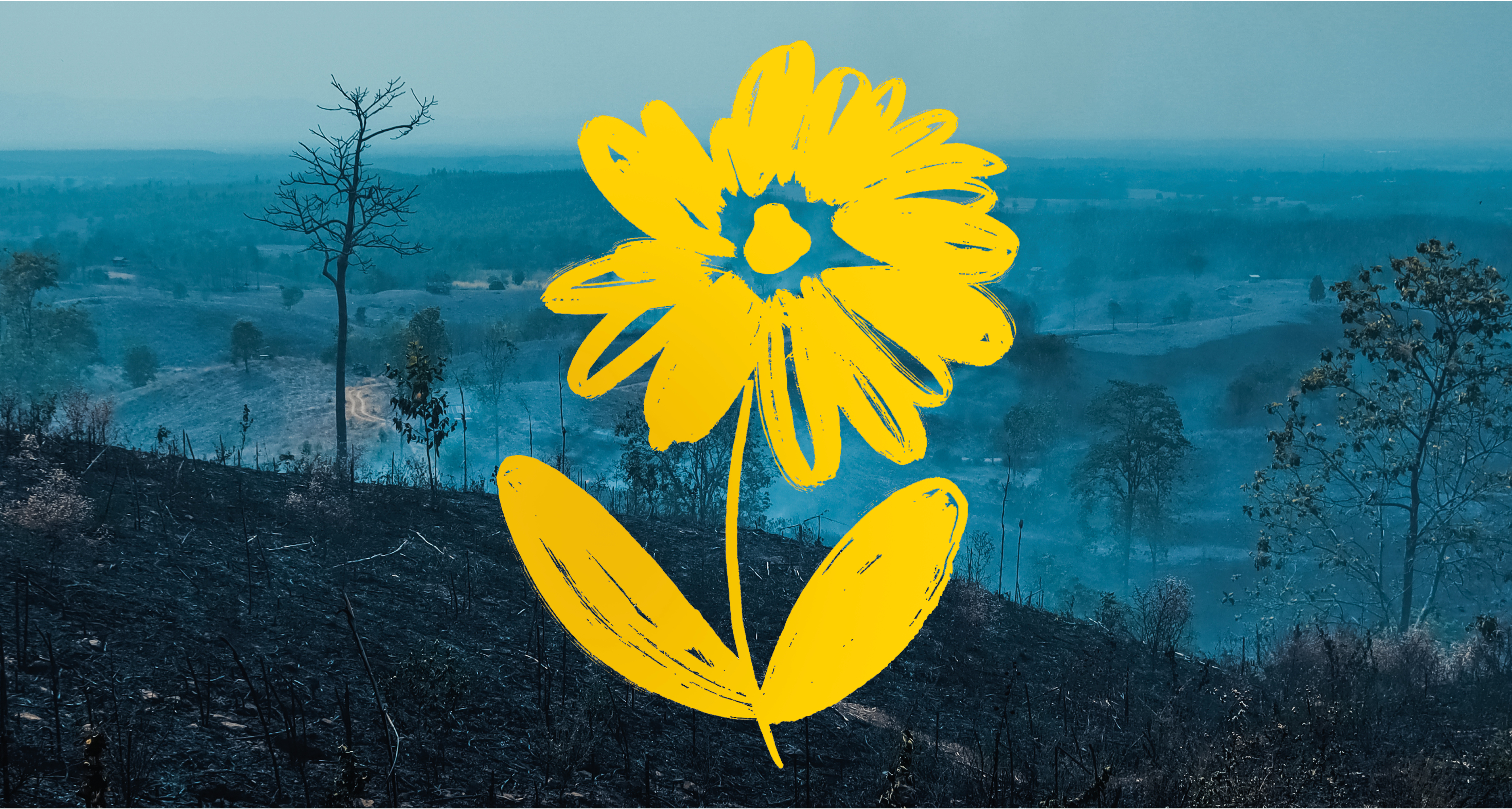
Fixing Our Broken Planet
Discover science-backed, hopeful solutions that will help us to create a more sustainable world.
New gallery open now.
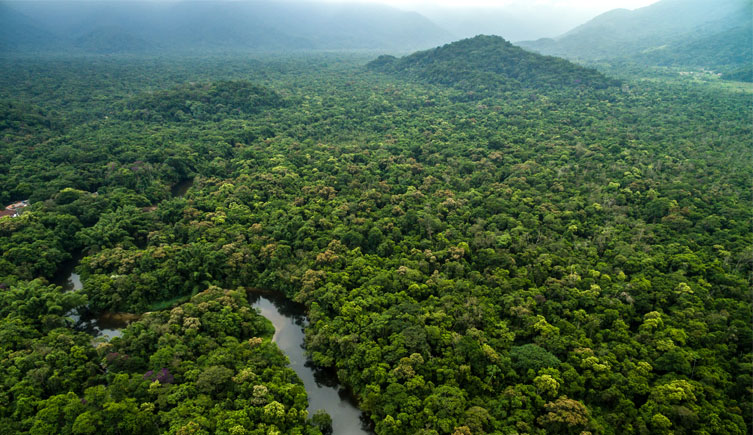
Concerned about the planet’s future?
Explore our on-demand course on the Biodiversity Crisis and learn how you can help.



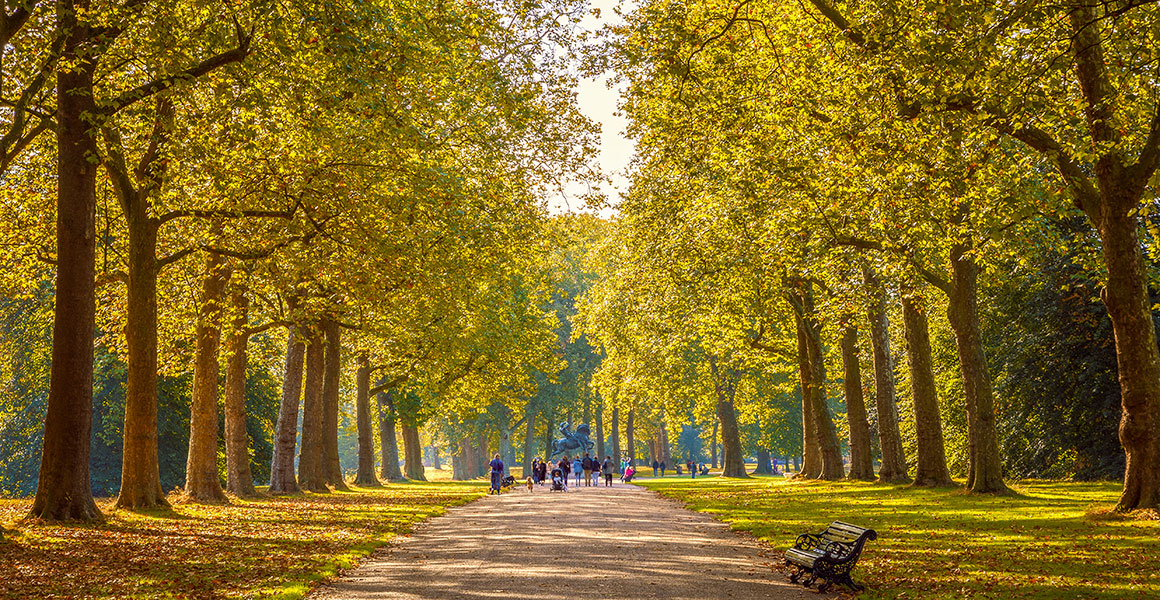
Don't miss a thing
Receive email updates about our news, science, exhibitions, events, products, services and fundraising activities. We may occasionally include third-party content from our corporate partners and other museums. We will not share your personal details with these third parties. You must be over the age of 13. Privacy notice.
Follow us on social media